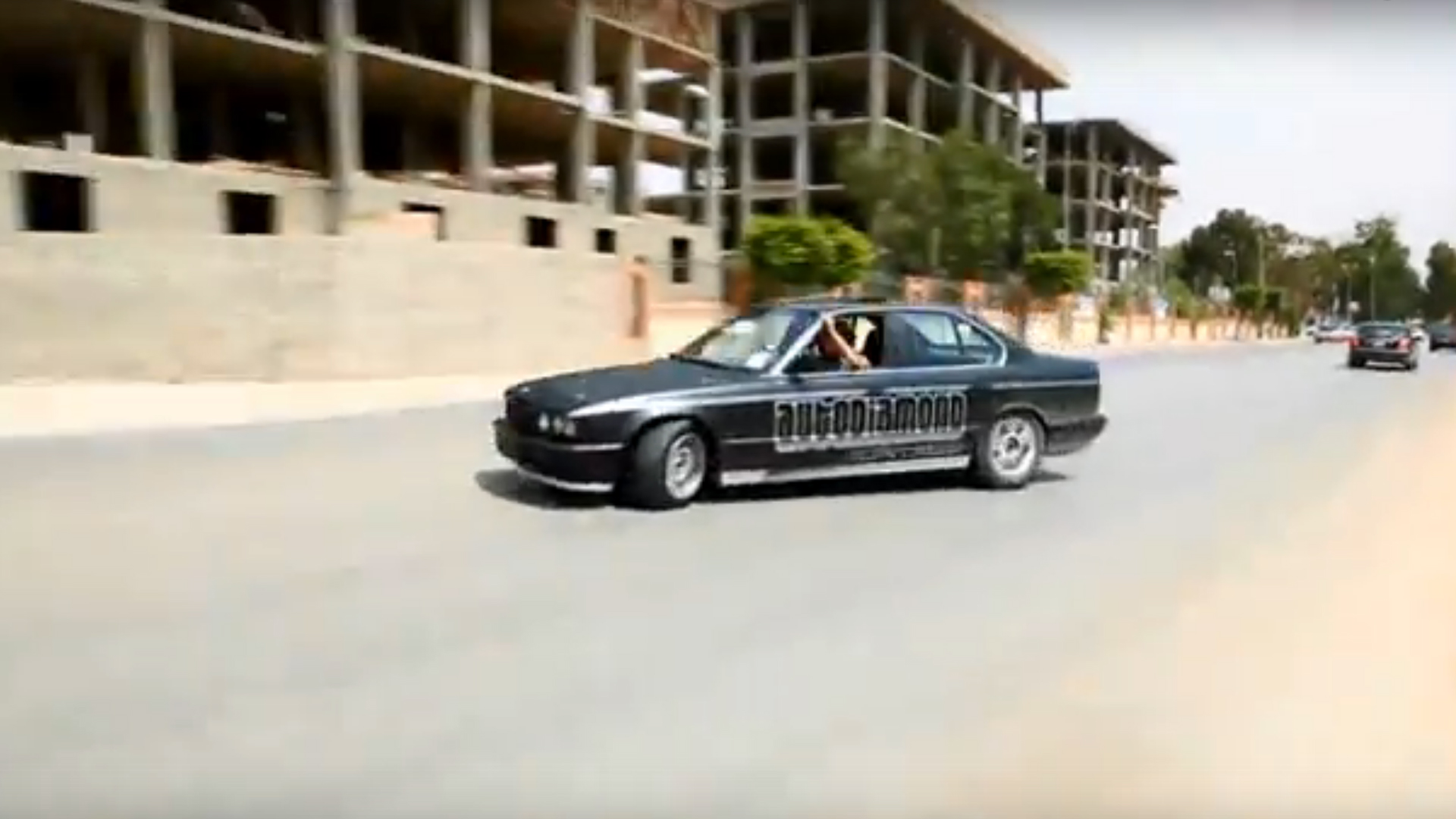Drift racing is one way to burn off frustrations in Benghazi, and drifters are a passionate lot, determined to race even when the war was raging.
Crowds scream, engines roar and tyres shriek among clouds of white smoke. Though illegal, the smell of alcohol and marijuana hangs heavy in the air as the crowds cheer the young men pushing their cars to the limit in Sahat al Keesh, Benghazi’s famous plaza.
Even when the war was raging, against the backdrop of gunfire and shelling which has come to define life in the conflict-wracked city, the lethal sport of drifting – deliberately forcing cars into elaborate and controlled skids – continued to capture the imaginations of Benghazi’s young in a way few other activities can claim.
“The scent of burned rubber gives me a certain kind of high,” explains Mohamed Al-Asbily. The 32-year-old is an experienced though lesser-known drifter.
Anyone who likes cars likes drifting. It’s often in the genes!According to a 2015 survey by the World Health Organization, Libya has the greatest number of road fatalities in the world, almost double the number of those killed in second-place Thailand. No one can claim that the daily carnage on Libya’s roads is a direct result of drifting, only that Libya’s ‘normal’ would blanch the hair of the most steadfast international driver.
Drifting, thought to have its roots in the Japanese racetracks of the 1970s, has established itself as a popular sport throughout much of the Middle East, especially in Saudi Arabia. However, Libyan drivers claim a unique distinction.
“Our way of drifting is different to that practised in the Gulf countries,” Mohamed explains. “They rely more on speed, while we rely on technique.”
BMWs tend to be the best route to giving form to that technique, with their popularity seen in the variety of nicknames afforded the different models: the Bunny, the Bat and the Sea Bass. The powerful rear-wheel drive BMW sedan – the Bunny – is the preferred choice of the Benghazino drifter.
No one can provide a definitive explanation for drifting’s popularity in Libya, with Facebook pages and YouTube channels dedicated to showcasing the exploits of Libya’s amateur daredevils. “You can’t ask anybody why they like something, you can't ask people why they like chocolates!” Mohamed argues. “Anyone who likes cars likes drifting. It’s often in the genes!”
With the low price of cars and fuel matched by soaring levels of boredom among Benghazi’s young, drifting, referred to within Libya as temtee (’entertainment’) doesn’t appear to be going anywhere soon.
Benghazi’s highway used to be where the city’s drivers settled racing scores. However, like the fighting that eventually forced its closure, drifting cost too many lives. Though the highway is open again, Benghazi’s traffic has succeeded where the authorities failed and now the city’s streets play the role of makeshift skidpan.
“Drifting in plazas is not as fashionable as it used to be. More skilled drifters do that on the streets between cars or on roundabouts. You always see a grinning driver behind the wheels of a sliding car,” Mohamed explains.
Though their popularity may have waned, plazas like Sahat al Keesh next to the old Gaddafi garrison still provide an arena where crowds can gather to watch these latter-day gladiators. On Thursday nights, young people with nothing better to do gather around the plaza, sitting either within or atop their cars, watching the display while smoking a joint or sharing a drink.
“Older generations think that those who drift must be on something, but that isn’t the case. It’s the drifting that gives drifters the high, not drugs,” Mohamed says.
Tonight belongs to the drifters, and as the crowds cheer, the engines roar and the smell of rubber and exhaust fumes fills the air, the fighting that has dominated so much of this city for so long seems a world away.





